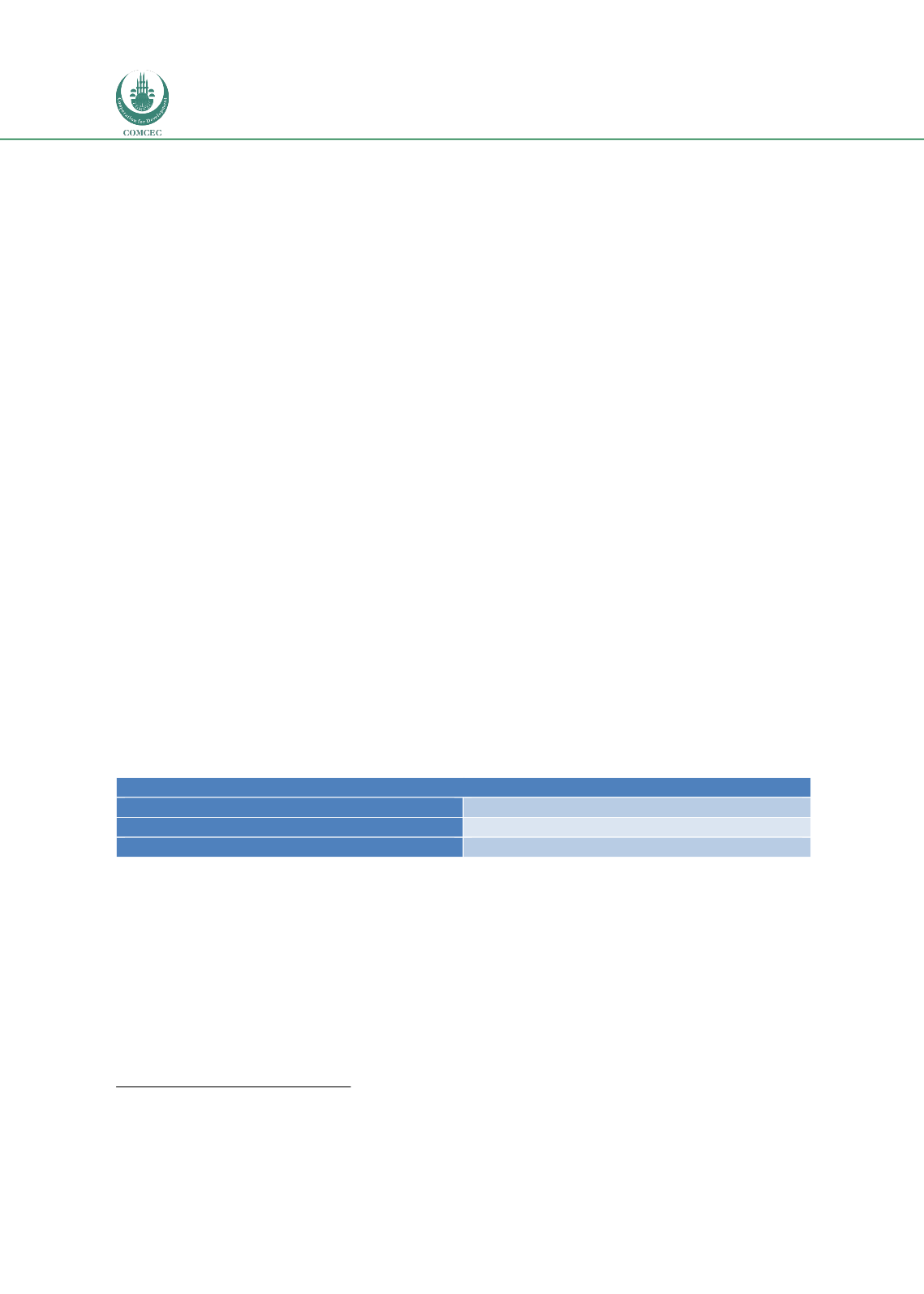

Reducing Postharvest Losses
In the OIC Member Countries
116
4.6.
Milk and Dairy Products in Uganda
This was a desk based study and is based on available published literature.
4.6.1.
Status and Importance
Agriculture is the main stay of Uganda’s economy, however, the share of agriculture in the
national Gross Domestic Product (GDP) has been steadily declining. Agricultural sector
activities which include cash crops, food crops, livestock, forestry and fishing contributed
22.2% of total GDP at current prices in the fiscal year 2013/14 compared to 22.5% in 2012/13.
The livestock subsector contributed 1.8% to total GDP at current prices, in the fiscal year
2013/14. Value added for livestock grew by 3.3% in 2013/14 compared to 3.4% growth in
2012/13 (UBOS, 2014). The dairy industry is estimated to contribute more than 50% of the
total output from the livestock sub-sector (Balikowa, 2011).
According to Balikowa (ibid), the total volume of milk processed into value added products is
only approximately 12.7% of the total marketed milk estimated at 1.92 million litres per day in
2010. The total installed capacity of the 14 operational milk processing plants
20
and mini
dairies is 618,000 litres per day and their average daily milk intake is 244,660 litres,
equivalent to 40% of their total installed capacity. The same source (Balikowa, ibid) states that
a total of 86,647 litres/day equivalent to 35.4% of the daily milk intake goes into production of
pasteurized milk; 59,136 litres/day (24.2%) goes into UHT. Thus, a total of 145,783 L/day,
equivalent to 59.6% of the total milk intake goes into production of liquid milk (pasteurized
milk and UHT); An average of 83,558 litres/day (34.2%) is processed into SMP and Whole Milk
Powder in the ratio of 2:8, while only 15,319 litres per day (6.3%) is processed into other
value added products such as: yogurt, 11,519 litres/day (4.7%); cheese, about 2,000 litres/day
(0.8%) and ice cream, 1,800 L/day (0.7%).
Tableprovides a break-down of the production of dairy products in Uganda according to FAO
Statistics (FAOSTAT, 2012).
Table 52: Production of dairy products in Uganda
Product
Quantity (tonnes)
Milk, whole fresh cow
1,207,500
Butter, cow milk
316
Milk, whole condensed
6
Source: FAOSTAT 2012
The Dairy Master Plan which was adopted in 1993 was the main document guiding
development of Uganda’s dairy industry. Some of the major implementations that have been
carried out based on recommendations of the Dairy Master Plan include liberalization of the
dairy industry, restructuring and commercialisation of the state owned dairy processing
company, and establishment of a Dairy Board. The Dairy Industry Act, 1998 provided the legal
framework for implementing recommendations of the Dairy Master Plan, including
establishing Dairy Development Authority (DDA) as a semi-autonomous statutory body
mandated to develop and regulate Uganda’s dairy industry (Balikowa, 2011). The DDA was
20
Given that this data is based on information available in 2010, it is likely that changes have taken place in the meantime.
Developments in the Ugandan dairy market following liberalisation of the industry have had an impact on the milk
production systems including an increasing intensification and market orientation.
















